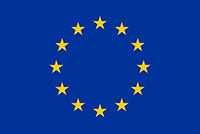Mini 1980-1989
June 1980
Moke production, initially from Australian completely knocked-down kits, begins in Portugal, a year before finishing in Australia. The Moke factory would continue in Portugal for 13 years before new owners Cagiva suspend production in 1993 prior to moving the plant to Italy to recommence production there. Whilst some equipment and a few completed cars do move to Italy, production is never restarted.
October 1980
The Mini Realignment project sees the demise of the 848cc, 1098cc and 1275cc engines in Mini saloons, along with the Clubman/1275 GT saloon bodyshell; the range is now rationalised to include City and HL saloons, plus the HL Estate (still with the Clubman style front end) and Pick Up, all with just one engine, the 998cc unit, which has also been heavily revised and is now known as ‘A Plus’.
The Van however soldiers on with the 848cc engine as standard, the 998cc A Plus engine being an option. The Realignment Minis are conceived as a temporary range to see Mini production out while the public get used to the then new Austin Metro model (actually called for the first year or two the MiniMetro).
February 1982
The last-of-line HL Estate brings to an end 22 years of Mini estate production and 13 years of the Clubman shape front end design.
April 1982
The 998cc A Plus engine and gearbox are further revised for increased economy. As a result, the Mini City becomes the City E, while the HL becomes the HLE.
September 1982
The HLE receives plush (by Mini standards) interior trim and eye-catching external fittings and becomes the Mini Mayfair, a model that revives public interest in the Mini (particularly in Japan, a country which is to increasingly influence marketing of the car in coming years). Austin Metro sales having failed to kill off the Mini, the Mayfair starts the policy of the then parent company, Austin Rover, to edge the Mini away from being a mass production town car into being a more upmarket, ‘cute’ niche model.
The policy is bolstered through the 1980s by the highly memorable ‘Minis Have Feelings Too’ and ‘You never forget your First Mini’ advertising campaigns, commissioned by Austin Rover boss and Mini enthusiast Graham Day. The Mayfair, in more and more luxurious forms, would continue in production for another 14 years.
May 1983
The Van and Pick Up models officially cease production, although sales of large numbers of the Van continue into early 1984 to fulfil fleet orders from the Police and gas, electricity and water ‘utility’ companies.
July 1984
The limited edition Mini 25, a luxury model based on the Mayfair celebrating the 25th anniversary of Mini production, becomes the first Mini since the 1275 GT of 1980 to be fitted with 12 inch wheels and front disc brakes.
October 1984
The introduction of 12 inch wheels and front disc brakes across the Mini range (by now pared down to City E and Mayfair saloons, plus increasingly frequent limited editions) change the appearance of the Mini for good. By association, all Minis built from now on will have to be fitted with the wheel arch extensions first seen on the Mini Special in 1979 (and still often referred to as Special Arches).
February 1986
The five millionth Mini is built. It has taken ten years to build the fifth million, whereas it had previously taken four years to build the fourth million and three years to build the third million. Production would continue to drop, virtually year on year, from now on – in fact, in the remaining 14 years of production, only another 380000 Minis approximately would be built.
October 1988
The under-bonnet view of the Mini changes markedly with the introduction of standard servo assistance for the brakes and a redesign of the heater hose system, spelling the end of the familiar heater tap bolted onto the cylinder head.
June 1989
The Mini Thirty limited edition further encourages public interest in the cute little old car that refuses to die. Its sporting overtones, including Minilite look-alike alloy wheels and black leather with red piping trim further reinforce enthusiasts’ feelings (after the preceding Racing Green and Flame Red limited editions) that parent company Rover Group is considering introducing a Mini sports model once again.








